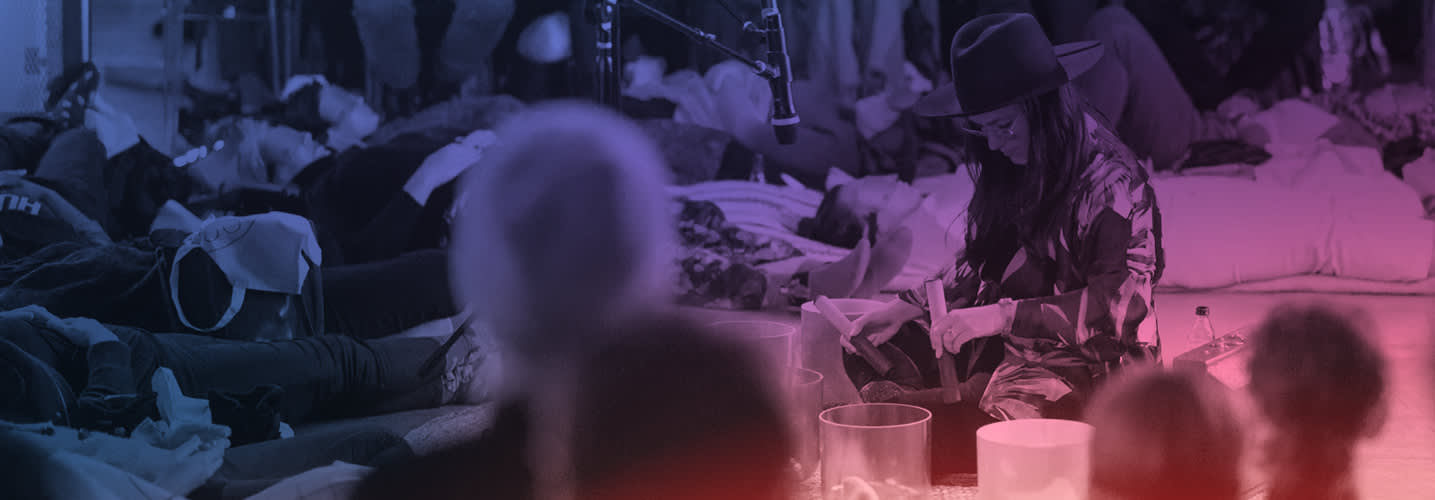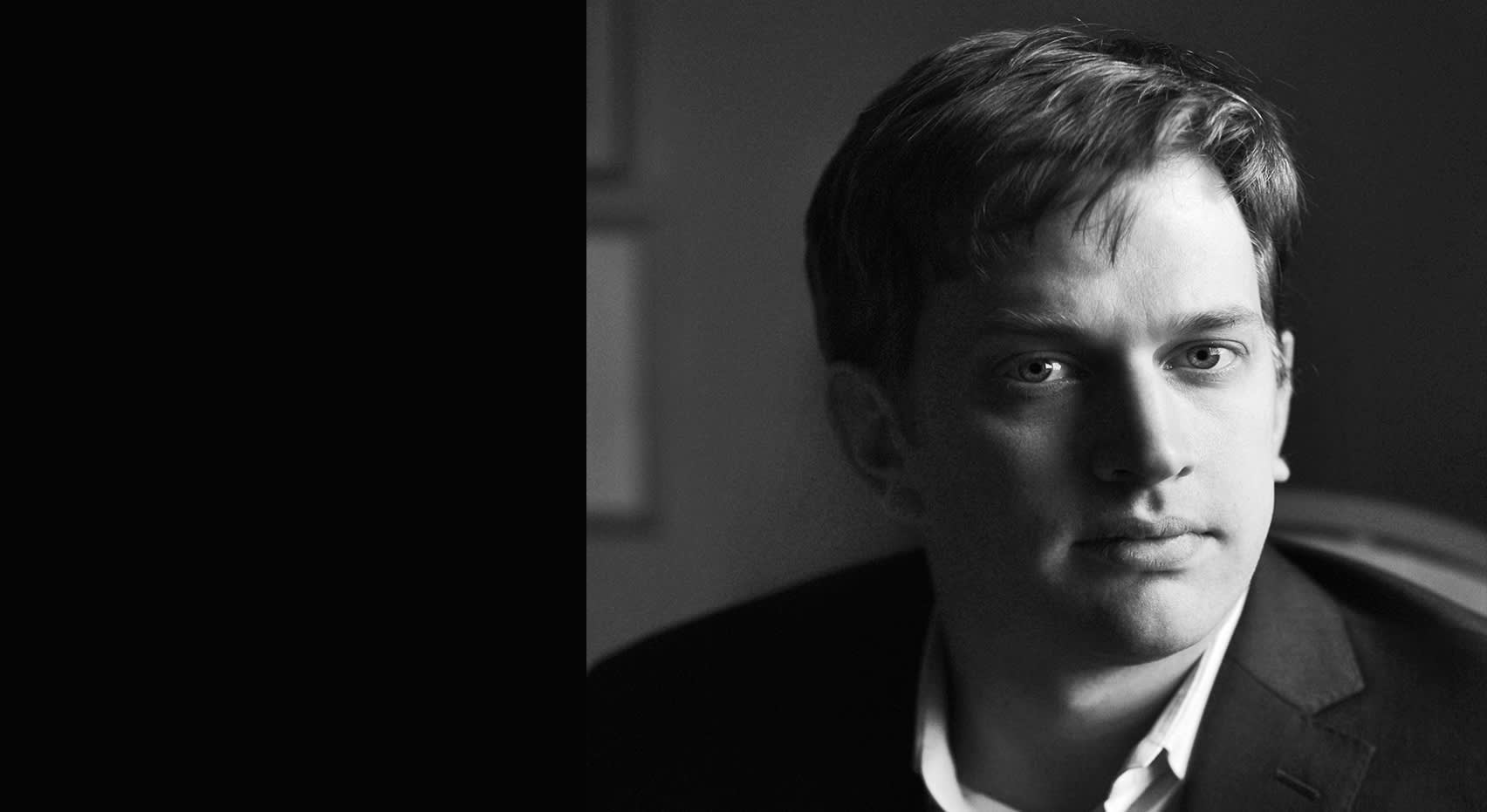There is no doubt that sound can stress us out. It’s impossible to ignore the wail of an ambulance or a needy baby, or the racket of a leaf blower on a fall morning. Even more subdued noises, like chewing or off-key humming, can be enough to put us on edge.
But the power of sound works the other way too. Some sounds are encoded with deep meaning and memory: a parent’s lullaby, the crackle of a campfire, the new nightly tradition of cheers and claps for front-line workers around the world. And increasingly, sound is also therapy—witness the rise of sound baths, a healing practice that offers meditation, rest, and simple permission to quiet the mind. Quiet…through sound.
What is a sound bath?
Sound baths made their way into the cultural consciousness with the gradual, cresting tide of, well, a sound wave. Four years ago, I was editing a travel and lifestyle magazine when a savvy wellness writer pitched us a story on sound baths. The concept was new to me, but the writer’s description—a kind of group meditation session slash auditory concert, led by a practitioner using crystal bowls, tuning forks, gongs, and other strange instruments to create deep, reverberating sounds that “wash” over participants, instilling deep focus and inner peace—had an undeniable hook. I assigned her the piece, especially because she had access to one of the world’s leading practitioners: a New York-based sound therapist named Sara Auster.
If we hadn’t run the story then, we would have eventually. Helped along by Sara’s pioneering work, sound baths were popping up everywhere, from museum galleries and corporate boardrooms to hospitals and church basements. As the years went by, the idea evolved from a quirky conversation starter—“What’s a sound bath? Will I get wet?” (No.)—to an accessible and important mindfulness tool. Soon, I could meet friends for a session in the suburbs without having to hunt one down in the city. We lay on our backs in savasana pose, a facilitator guiding us to bring our attention to the sounds produced in the room, for an experience that was soothing, communal, and strangely spiritual. But it wasn’t until recently that I had the opportunity to talk to Sara and attend one of her famous sound baths myself. She had released her first book, Sound Bath: Transform Your World Through Listening, and was on the cusp of introducing a brand-new way to experience sound baths with her guided sleep meditation, Rest and Digest.
“I believe sound baths and this practice of deep listening are for everyone,” Sara told me. “Holding space and creating the environments and conditions for people to have meaningful experiences have always been a driving force behind what I do.”
What are the benefits of sound baths?
Sara’s journey hasn’t been traditional—recovery from an accident in her 20s led her from visual arts and music to yoga and complementary medicine—but the organic introduction of sound therapy into her yoga and meditation practice was instantly resonant. “The reaction I got when I started to introduce sound little by little—it sort of blew me away,” she says. “People were having really profound experiences and asking for more of that. So that’s how I started to expand the offering to be more focused on the sound.”
Key to Sara’s approach is a lifelong love affair with science and curiosity about how things work. “I’m not a woo-woo person,” she says. “It’s important for me to understand human physiology, biology, psychology, and how the mind interprets sound, and use that to inform how I approach each sound bath experience.”
For centuries, sound and music have been used to aid in connection, healing, and spirituality, from church hymns to chanting and mantras. More recently, scientists have studied how sound affects health, from ASMR to the neurochemistry of music. Research is still catching up to understanding exactly how sound therapy and sound baths deliver the benefits people describe anecdotally, but a study published in the Journal of Evidence-Based Integrative Medicine found that a Tibetan singing bowl meditation helped decrease stress, anxiety, and pain, and improved mood and a sense of spiritual well-being, for participants.
To achieve this, Sara uses harmonic vibrations and deep, overtone-emitting instruments to stimulate alpha and theta brain waves, which are associated with meditative and peaceful states. In a sleep-focused session such as the one in Rest and Digest, she intentionally uses a combination of peaceful sounds, guided breathwork, and her own voice to downshift listeners into a deeper state of relaxation and prepare for sleep.
“If meditation is taking the stairs,” Sara says, “then a sound bath is taking the elevator.“
The overall effect is less about the specific instruments, though, and more about how they help focus our attention in a way similar to meditation, whose health benefits (reducing stress, pain, and anxiety, and improving sleep, concentration, memory, and even kindness) are well known. So while you may be tempted to try to identify the intriguing variety of noisemakers used in a sound bath—from tuning forks, bells, and chimes to gemstone bowls, gongs, and even didgeridoos—the instruments aren’t the point: The sounds are really an entryway to a meditative state.
This makes sound baths an excellent tool for anyone who finds it hard to meditate—which, let’s face it, is basically all of us. “If meditation is taking the stairs,” Sara says, “then a sound bath is taking the elevator.”
How to do a sound bath at home
Until recently, sound baths were considered an in-person experience only. Live instruments and a live practitioner, peak acoustics, and a sense of communal gathering seemed inseparable from the sound bath experience—elements that will always make the live version special. But just as she helped pioneer sound baths into a mainstream part of the mindfulness movement, Sara Auster is making them even more accessible in virtual form.
With Rest and Digest, Sara partnered with Audible to create a customized 10-minute sound bath that helps participants drift peacefully off to sleep. (Her full-length audiobook, a comprehensive guide to her work and approach, also includes a 10-minute sound bath.) Rest and Digest was created before social distancing put a pause on in-person events, but its applications for anyone sheltering in place and/or having a hard time sleeping were so evident that Audible made it available free upon release as part of a complimentary Sleep
collection.
To get the most out of a virtual sound bath, Sara recommends dimming the lights, lying or sitting down with an eye mask and a blanket, and using earphones for the best-quality sound. “I love seeing all of the photos and videos people share with me of how they are transforming their homes to become sanctuaries for peaceful moments of self-care and meditation,” Sara says. “They are listening to sound baths with their pets, creating quiet time with their children, and coming together (virtually) for a moment of pause with friends.” You’ll definitely want to find a comfortable position, as one upside to the at-home sound bath is evident: You can fall asleep anytime, and stay right where you are—till morning if you’re lucky—with no commute after!
One of the things I appreciated most about my own experience at one of Sara Auster’s live events was the deep sense of communion I felt with the other participants. After a mind- and spirit-altering session letting go of distractions and becoming one with the sounds, Sara asked us to maintain eye contact with another person in the crowd. I found myself locking eyes with a colleague for a longer time than I have ever held eye contact with any other person—spouse included. It was deeply weird, and also deeply moving…and not something I thought could ever be replicated in a digital environment.
But Sara has an idea for approximating connection in a virtual sound bath, even in the era of social distancing. “You can ‘share’ the experience with your loved ones in different parts of the world by tuning in and listening simultaneously,” she says. “Even though you aren’t together in a room, you are connected through a shared experience of sound.”
Ultimately, what’s been exciting to Sara as a practitioner of both live sound baths and virtual events and recordings is the idea of making sound therapy accessible to everyone. “It is an honor to hold this kind of space for people all around the world, and give them a way to truly connect through the art and practice of listening,” she says. “These are new ways for us to grow and come together. It’s exciting to think about the possibilities.”







